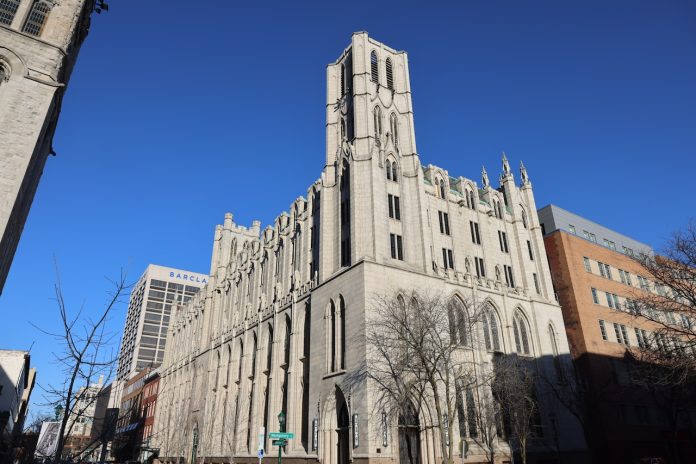Syracuse, N.Y. — Common Councilor Pat Hogan is picking a fight with historic preservation advocates in his final months in office over the power a city volunteer board has to halt renovation projects.
Hogan has proposed an amendment to the city’s zoning law that would establish an exemption for property owners of locally protected historic buildings to obtain Landmark Preservation Board approval on many exterior repairs. The council itself would have the power to grant the exemptions, and they would not be bound by any of the historic preservation criteria now established in the city’s zoning law.
The measure has drawn a swift and loud rebuke from LPB members and other historic preservation advocates.
“It’s disappointing that this has been brought forth,“ Julia Hafftka-Marshall, the LPB’s chair, said at the board’s Oct. 30 meeting. ”I’m not really understanding the purpose other than to say that the Landmark Preservation Board should not exist, because that’s what it means.”
Hogan said his frustration with the LPB goes back almost 20 years, when the board opposed demolishing a house that it deemed historically significant to make room for a new Ronald McDonald House on East Genesee Street. In recent years, Hogan’s been miffed at the LPB’s handling of the downtown Mizpah Tower renovation by attorney Tom Cerio, who was one of Hogan’s top donors and campaign advisers during his mayoral primary run.
Cerio has gone back-and-forth with the LPB on issues related to window and door replacements for the long-vacant building he’s redeveloping into a mix of office, apartment and restaurant/bar space.
“It’s just the free rein that the preservation board and the preservationists have over what’s to become of these historic structures,” Hogan said. “I’m all in favor of preservation, but I’d like to see these buildings repurposed and used. What (Hogan’s proposal) does is add a layer of government that’s elected by the people to make a final decision.”
But in its current form, the measure would allow for a property owner to completely bypass the LPB. The city Planning Commission serves as the body that hears appeals of LPB’s decisions on certificates of appropriateness. Both boards’ members are appointed by the mayor.
Hogan said that in practice, the council would still want exemption applicants to go through the LPB review, and he would be open to tweaking his proposal to make that clear.
Opponents of any changes point to the concern that involving elected city councilors in making historic preservation decisions invites political influence.
“Left unchecked, this measure would open the door to development driven purely by profit,” said Andrew Roblee, a historic preservation architect who serves as president of the Preservation Association of Central New York. “We cannot hand over the fate of the city’s heritage from the will of the people to the whims of rich developers. Once a historic building is gone, it’s gone forever.”
Hogan said he has not consulted with his fellow common councilors on the measure. They voted unanimously on Oct. 27 to ask the city Planning Commission to review the proposal and make a recommendation.
PACNY is urging its members to contact councilors and the planning commission to oppose the measure. The planning commission’s review would include a public hearing.
It’s not yet known when that will take place, but the body is supposed to provide its recommendation to the council within 60 days of receiving it.
That timeline could mean Hogan is no longer on the council when it comes up for a vote. He is stepping down at the end of the year because he did not seek re-election to his seat.
Hogan said he’s going to push Mayor Ben Walsh’s administration to move quickly on the Planning Commission review. He is not swayed by the comments he’s seen about his proposal so far.
“What irritates me is people borrowing money to repurpose buildings and being jammed up by either codes or Landmark Preservation Board or something like that,” he said, “They’re obstructionists and frankly, they’re elitists, too.”
If you purchase a product or register for an account through a link on our site, we may receive compensation. By using this site, you consent to our User Agreement and agree that your clicks, interactions, and personal information may be collected, recorded, and/or stored by us and social media and other third-party partners in accordance with our Privacy Policy.







